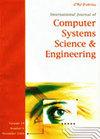Statistical Data Mining with Slime Mould Optimization for Intelligent Rainfall Classification
IF 2.2
4区 计算机科学
Q2 Computer Science
引用次数: 0
Abstract
Statistics are most crucial than ever due to the accessibility of huge counts of data from several domains such as finance, medicine, science, engineering, and so on. Statistical data mining (SDM) is an interdisciplinary domain that examines huge existing databases to discover patterns and connections from the data. It varies in classical statistics on the size of datasets and on the detail that the data could not primarily be gathered based on some experimental strategy but conversely for other resolves. Thus, this paper introduces an effective statistical Data Mining for Intelligent Rainfall Prediction using Slime Mould Optimization with Deep Learning (SDMIRPSMODL) model. In the presented SDMIRP-SMODL model, the feature subset selection process is performed by the SMO algorithm, which in turn minimizes the computation complexity. For rainfall prediction. Convolution neural network with long short-term memory (CNN-LSTM) technique is exploited. At last, this study involves the pelican optimization algorithm (POA) as a hyperparameter optimizer. The experimental evaluation of the SDMIRP-SMODL approach is tested utilizing a rainfall dataset comprising 23682 samples in the negative class and 1865 samples in the positive class. The comparative outcomes reported the supremacy of the SDMIRP-SMODL model compared to existing techniques.基于黏菌优化的统计数据挖掘智能降雨分类
由于来自金融、医学、科学、工程等多个领域的大量数据的可访问性,统计数据比以往任何时候都更加重要。统计数据挖掘(SDM)是一个跨学科领域,它检查庞大的现有数据库,从数据中发现模式和联系。在经典统计学中,数据集的大小和数据不能主要基于某些实验策略收集的细节有所不同,但在其他解决方案中则相反。因此,本文介绍了一种利用深度学习黏菌优化(SDMIRPSMODL)模型进行智能降雨预测的有效统计数据挖掘方法。在SDMIRP-SMODL模型中,特征子集的选择过程由SMO算法完成,从而使计算复杂度最小化。用于降雨预测。利用卷积神经网络长短期记忆(CNN-LSTM)技术。最后,本研究将鹈鹕优化算法(POA)作为超参数优化器。利用一个降雨数据集对SDMIRP-SMODL方法的实验评估进行了测试,该数据集包括23682个阴性类样本和1865个阳性类样本。比较结果报告了与现有技术相比,SDMIRP-SMODL模型的优势。
本文章由计算机程序翻译,如有差异,请以英文原文为准。
求助全文
约1分钟内获得全文
求助全文
来源期刊

Computer Systems Science and Engineering
工程技术-计算机:理论方法
CiteScore
3.10
自引率
13.60%
发文量
308
审稿时长
>12 weeks
期刊介绍:
The journal is devoted to the publication of high quality papers on theoretical developments in computer systems science, and their applications in computer systems engineering. Original research papers, state-of-the-art reviews and technical notes are invited for publication.
All papers will be refereed by acknowledged experts in the field, and may be (i) accepted without change, (ii) require amendment and subsequent re-refereeing, or (iii) be rejected on the grounds of either relevance or content.
The submission of a paper implies that, if accepted for publication, it will not be published elsewhere in the same form, in any language, without the prior consent of the Publisher.
 求助内容:
求助内容: 应助结果提醒方式:
应助结果提醒方式:


